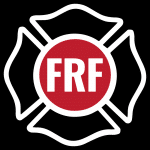The Spectrum of Firefighter Fitness, Where do You Fit In?
This post is long overdue, I’ve been fortunate to present to firefighters throughout the midwest and talk to others from all over the world. A common question that comes up in these conversations is “what is the best workout for me to follow?” This is a loaded question and one that is not easily answered. The answer depends on numerous factors: what is your current level of fitness? What are your goals? What equipment do you have? What is your experience? How much time do you have? Are you on shift?….And the list goes on…
As you can see there are a lot of factors to consider in choosing the “best” workout program for fire rescue athletes. There is no “best” workout program for recruits, just as there is no “best” way to force a door. Going into a situation, a well prepared firefighter should have a plan in the back of their head but also must be able to adapt to changing conditions. To create an effective recruit fitness program, trainers, chiefs and officers must take into consideration the specific needs of the recruits and the demands of the fire academy. The goals of the recruit academy fitness program should be to 1) prepare the recruit for the demands of being a fire rescue athlete and 2) teach them how to utilize proper fitness modalities to prolong their career.
Before we begin to plan the recruit fitness program, it is essential that we talk about the concept of periodization. Periodization is the systematic application of overload through a preplanned variation of program components to optimize gains in strength and endurance while preventing overuse, staleness, over-training, injury and plateaus. While that sounds pretty technical, it basically means that periodization is a plan that is used to effectively and efficiently maximize fitness gains. Research has shown periodized programs are superior in eliciting fitness improvements.
The periodization model consists of various training periods or components. These components are distinct periods of time you are working with like the training session, week, and/or cycle. Identifying, defining and organizing these components allow the trainer to easily accomplish several things. First, organizing the components provides a developmental progression which keeps the training effective and safe. Second, the organization of these components keeps the training changing and interesting. Last, organizing the various components of periodization provides a direction to peak performance; this keeps the training optimal.
Training should follow a developmental approach. This means there should be a hierarchy of training. First it is essential for the athlete to develop a training base that should increase the body’s functional capacity. Once this is accomplished, the intensity of the exercise is increased to emphasize strength development. This period is characterized by lower volumes of work and higher intensities. In more general terms, we can also say we develop stability, then strength, and finally power. Regardless of what the training program looks like, it cannot violate this developmental approach. If the recruit’s joints aren’t stable, they cannot be heavily loaded. Likewise, if their muscles have not been conditioned, they cannot produce fast, high-intensity contractions (power). If this developmental approach is not followed, the likelihood of an injury and/or over training greatly increases.
The above pyramid represents the Hierarchy of Firefighter Fitness Development. Every recruit fitness program should begin in the general fitness or conditioning phase and progress throughout the academy. This same approach should be taken by active firefighters working to get and stay “fit for duty.”
The chart below provides details of each developmental phase. These guidelines should be used to help create an effective recruit fitness program.
By now I hope you understand that creating an effective firefighter fitness program is more than just using weight machines or following the newest fitness trend. To develop an effective periodization program for the fire athlete, it is essential to understand the overall structure of the program. Once that structure is clear, the process of incorporating rest, variety, and progression becomes more manageable. The key to successful periodization is the ability to challenge the body with new activities and progressive overload (intensity). Three to four week cycles will get results. Just as the body experiences peak benefits of one cycle of planned workouts and starts to adapt to it, the athlete moves into a whole new three to four-week cycle that offers a completely new set of challenges.



